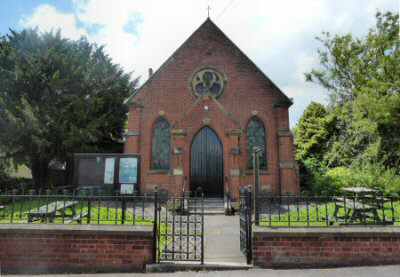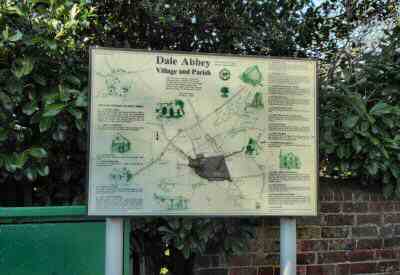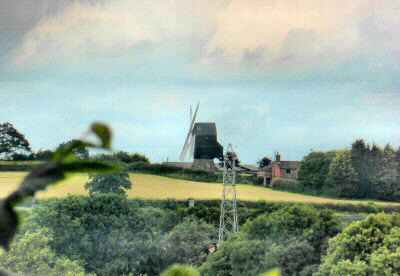DALE ABBEY
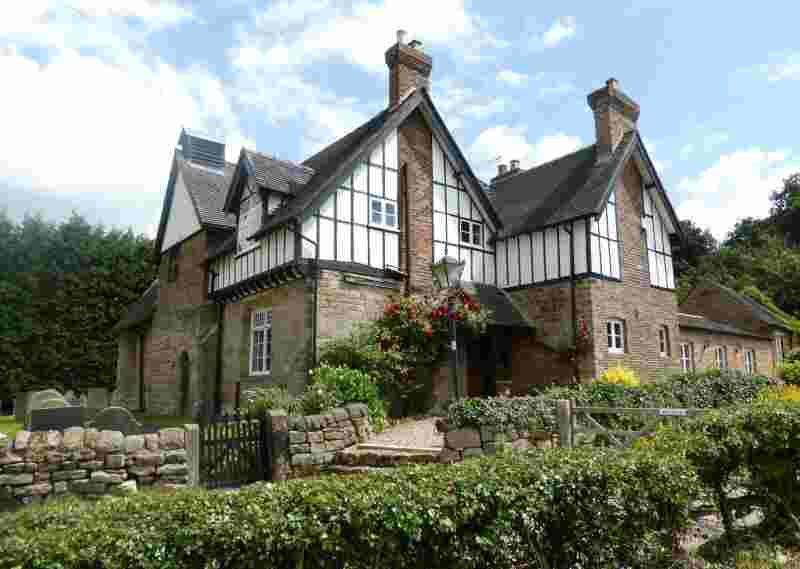
INFORMATION
Where is it? – Dale Abbey is off the A6096 Spondon to Ilkeston road (SK438387).
What to do? – Explore the village and take a good look at the Information Board opposite Tattle Hill which provides you with a potted history of the village; walk along the path through Hermit’s Wood and visit the Hermit’s Cave cut out of the sandstone cliff; plan your visit for when a service takes place at All Saints’ Church to fully absorb the atmosphere of this wonderful place.
Where to eat? – The Carpenters Arms is an attractive ivy-clad pub on Moor Lane facing Village Street. The front dates back to 1880, but other parts are nearly another 200 years older. Outside seating is available. Food is available seven days a week. For more information telephone 01159 325277 or visit the website – www.carpentersarmsdaleabbey.co.uk; The Friar’s House is a family-owned and run Tea Room in the historic Friar’s House at Dale Abbey that dates from 1450. For information relating to opening times telephone 0115 9309152 or visit the website – www.friarshousedaleabbey.co.uk.
Other places to visit
The Bottle Kiln is an independent shop and café in West Hallam, near Ilkeston, stocking beautiful homeware, jewellery and gifts. It is open seven days a week. For further information, telephone 01159 329442 or visit the website – www.bottlekiln.co.uk; Shipley Country Park contains over 700 acres of attractive parkland with lakes, woodlands and miles of footpaths and bridleways. There is a Visitor Centre with a countryside gift shop and cafe. For more information, google Shipley Country Park or contact Derbyshire County Council; Erewash Museum is inside Dalby House at Ilkeston. It is a Georgian family home with Victorian extensions. Each room is home to exhibition galleries that tell the story of Erewash and its people from the Roman period right up to the 21st Century. For more information telephone 01159 071141or visit the website – www.erewashmuseum.co.uk
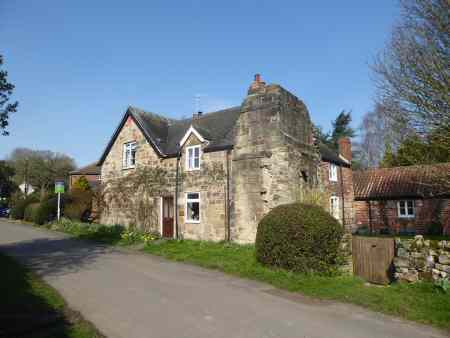
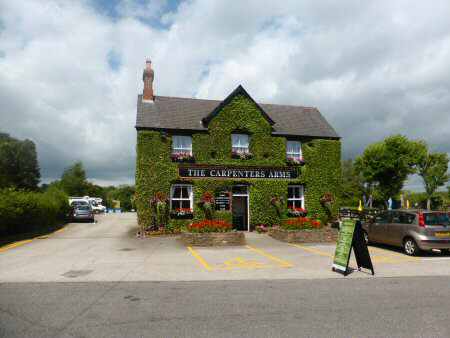
PROFILE
A more peaceful and pleasant spot than Dale Abbey is hard to find in the whole of Derbyshire. Yet it is less than three miles from the suburbs of Derby to the west, and even closer to a vast area of housing and industrialisation on the eastern side.
Dale Abbey Story
Hermit’s Wood is ancient woodland and lies to the south of the picturesque village of Dale Abbey. It probably formed part of the original forest that once covered the whole area. Here are to be found many fine beech and oak trees, as well as abundant wildlife and over 60 species of flowering plants, have been recorded. The Hermit’s Cave is now designated as a Scheduled Ancient Monument. It is worth taking a good look at the view from this point. On the hill to the north can be seen the Cat and Fiddle Windmill, the only one of its kind left in Derbyshire.
Here he continued to worship in solitude. Until one day the smoke from his fire was seen by a Knight, Ralph Fitz Geremund the owner of the land. Intending to drive the intruder away. He rode over to where the fire was burning, but on hearing the hermit’s story. Filled with compassion, he allowed him to remain and bestowed on him the tithe money from Borrowash Mill. This enabled the hermit to build a small chapel and home on the site of the present church.
The White Canons
After the hermit’s death, word spread of the religious significance of the place. Following several attempts, Dale Abbey was founded in about 1200. By an order known as the White Canons because of the colour of their habits. There the abbey remained until 1538 when it was dissolved and the greater part demolished by the command of Henry VIII.
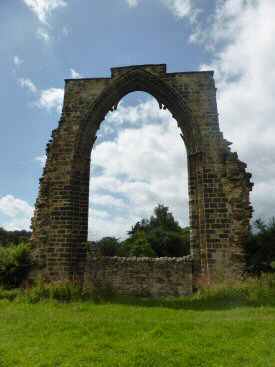
Abbey Demolition
Following the demolition, the stone from the abbey was eagerly seized by local builders. Today, little but the great 13th-century east window remains. This probably has much to do with the ancient belief that if the arch fell the villagers would have to pay tithes. The abbey ruins are now designated as an ancient monument.
All Saints’ Church
Parts of All Saints’ Church date back to 1150. When the hermit started to build his chapel and house on the site. This is the reason why the church is the only one in England to share its roof with a farm. At one time it shared it with the abbey infirmary and later with the Bluebell Inn. The connecting door from the church was said to lead from – salvation to damnation.
The church is very unusual and nothing seems to quite fit, which is part of its charm. Despite its diminutive size, it is reputedly the largest chalice in England. A Jacobean cupboard which is used as a communion table is in front of the reading desk instead of behind it. The pulpit leans at a sharp angle and it is possible to sit in one of the box pews with your back to the minister! Services are held regularly on Sunday afternoons to which visitors are welcome.
Hermit’s Cave
Hermit’s Wood is ancient woodland and lies to the south of the picturesque village of Dale Abbey. It probably formed part of the original forest that once covered the whole area. Here are to be found many fine beech and oak trees. As well as abundant wildlife and over 60 species of flowering plants have been recorded. The Hermit’s Cave is now designated as a Scheduled Ancient Monument. It is worth taking a good look at the view from this point. On the hill to the north can be seen the Cat and Fiddle Windmill, the only one of its kind left in Derbyshire.
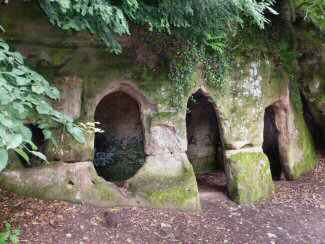
The Gateway Centre
The Gateway Centre is situated on the main street which is simply called ‘The Village’. Originally it was a Methodist Chapel before becoming redundant. The Parochial Church Council purchased it and it is now used to continue Dale Abbey’s tradition of hospitality. It is open to visitors for refreshments every Sunday afternoon and also operates as a community centre. At the rear, a footpath passes the remains of the Abbey Gatehouse. This was once used to house prisoners being moved between Nottingham and Derby.
Around Dale Abbey
The Carpenters Arms on Moor Lane opposite Village Street dates back in part to the late 1600s. Poplar Farm, on the main street, goes back even further to the 1500s. It is a lovely old half-timbered building with a brick extension, the outbuildings of which have been converted to living quarters.
Tattle Hill is said to have got its name from neighbourly ‘tittle-tattle’ amongst the householders. By the side of the road is a thatched barn once the up-market residence of four cows. Abbey House contains some of the remains of Abbey’s refectory and fireplace with foundations at the rear. Across the road from the church are the remains of a monastic pond.
